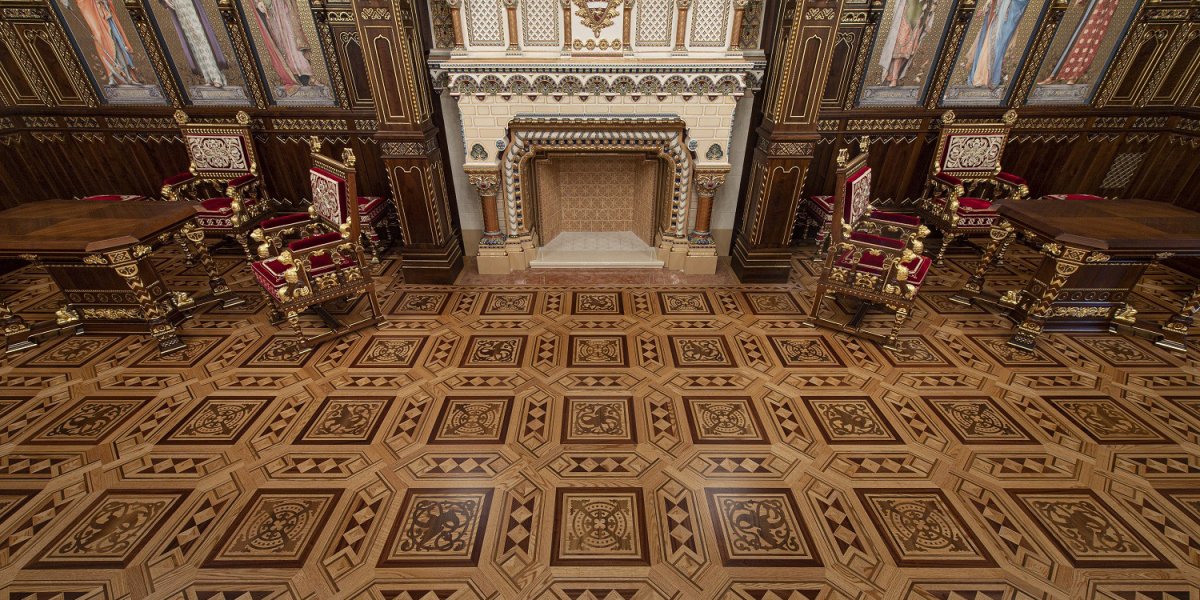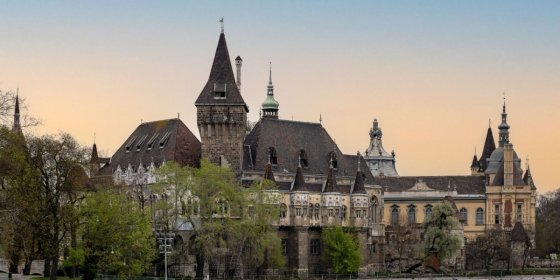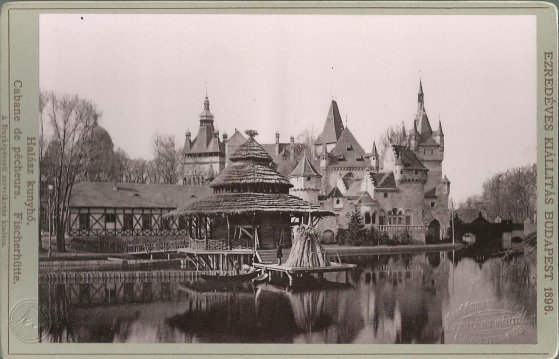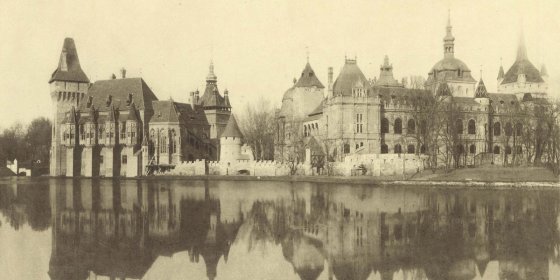 The „intertwined history” of the bridges and the city of Budapest
Which ideas and events have shaped the fate of bridges of Budapest and the cityscape? Alongside many other interesting facts, this question is also answered this newly published book by the Budapest City Archives, which introduces the history of bridges in Budapest.
The „intertwined history” of the bridges and the city of Budapest
Which ideas and events have shaped the fate of bridges of Budapest and the cityscape? Alongside many other interesting facts, this question is also answered this newly published book by the Budapest City Archives, which introduces the history of bridges in Budapest.
National Millennium Exhibition
 The Neuschlosz Brothers created the inlaid parquet floor of the St. Stephen's Hall
The Neuschlosz Brothers created the inlaid parquet floor of the St. Stephen's Hall
September 1, 2021 at 3:30 PM
From 20 August, anyone can visit the rebuilt St. Stephen's Hall in the renewed south connecting wing of the Buda Castle. The beauty and uniqueness of the ballroom are enhanced by its special inlaid parquet flooring. But who created this unique flooring? Take a look at the work of the Neuschlosz Brothers.
Vajdahunyad Castle was rebuilt for The Museum and Library of Hungarian Agriculture, founded 125 years ago
July 27, 2021 at 9:00 AM
Vajdahunyad Castle, located on the former Széchenyi Island of the Városliget Lake, has been very popular since 1896. With its special appearance and unique atmosphere, it attracts tens of thousands of visitors. Walking between its walls and characteristic parts of the building, one can travel a long way in time and space from the Highlands to Transylvania, from the Romanesque to the Baroque period. And the walls hide one of Europe’s largest agricultural collections and museums, celebrating its 125th anniversary this year.
Renowned photographers of the era captured the National Millennium Exhibition in the City Park 125 years ago
July 14, 2021 at 9:30 AM
The National Millennium Exhibition in City Park, opened in 1896, is a unique event to this day. The capital has not hosted such a large-scale exhibition since then, which also presents the history, economy, industry, and ethnography of the nation. Thanks to the photographs taken by the famous photographers of the period, György Klösz and Antal Weinwurm, people can still marvel at the beautiful pavilions built for this event, the ethnographic village, the restaurants and the festive atmosphere.
Celebrating the millennial past of the Hungarian nation
May 1, 2021 at 4:00 PM
The central event of the millennium celebrations of 1896, held on the anniversary of the Hungarian Conquest of the Carpathian Basin, was the National Millennium Exhibition held in City Park. The exhibition, which was open for half a year, offered insight into the past of Hungarians and provided an opportunity to present the results achieved during the extraordinary economic development after the Austro-Hungarian Compromise.
More articles
 The „intertwined history” of the bridges and the city of Budapest
Which ideas and events have shaped the fate of bridges of Budapest and the cityscape? Alongside many other interesting facts, this question is also answered this newly published book by the Budapest City Archives, which introduces the history of bridges in Budapest.
The „intertwined history” of the bridges and the city of Budapest
Which ideas and events have shaped the fate of bridges of Budapest and the cityscape? Alongside many other interesting facts, this question is also answered this newly published book by the Budapest City Archives, which introduces the history of bridges in Budapest.
 The Bridge Report, which brought a turning point in the history of Budapest
A travel report that changed the history of Pest and Buda, as well as Hungary. The little book contributed to the change of half a thousand years of legal customs and the implementation of an investment of unprecedented size and technical quality. This book was The Bridge Report [Hídjelentés in Hungarian].
The Bridge Report, which brought a turning point in the history of Budapest
A travel report that changed the history of Pest and Buda, as well as Hungary. The little book contributed to the change of half a thousand years of legal customs and the implementation of an investment of unprecedented size and technical quality. This book was The Bridge Report [Hídjelentés in Hungarian].
 Drama on the university wall - The heroic monument was planned 95 years ago
In the constant hustle and bustle of the Egyetem Square in Pest, the students may not even notice the monument that decorates the short section of wall between the church and the central building of ELTE. However, it commemorates their predecessors, the heroes who fought for their country in World War I, and those who heroically helped them. The first design of the dramatically collapsing soldier was born in 1928, ninety-five years ago.
Drama on the university wall - The heroic monument was planned 95 years ago
In the constant hustle and bustle of the Egyetem Square in Pest, the students may not even notice the monument that decorates the short section of wall between the church and the central building of ELTE. However, it commemorates their predecessors, the heroes who fought for their country in World War I, and those who heroically helped them. The first design of the dramatically collapsing soldier was born in 1928, ninety-five years ago.



